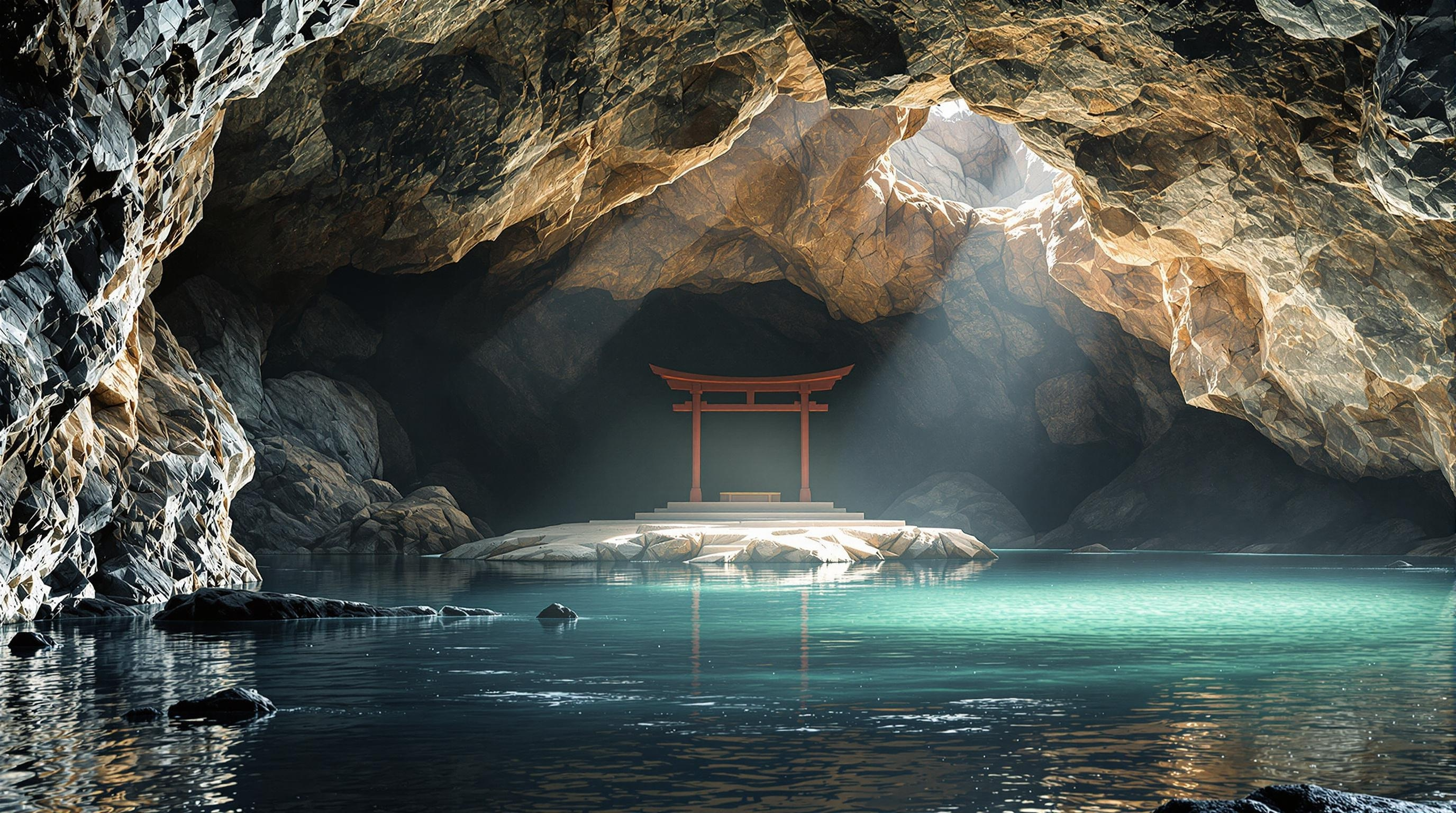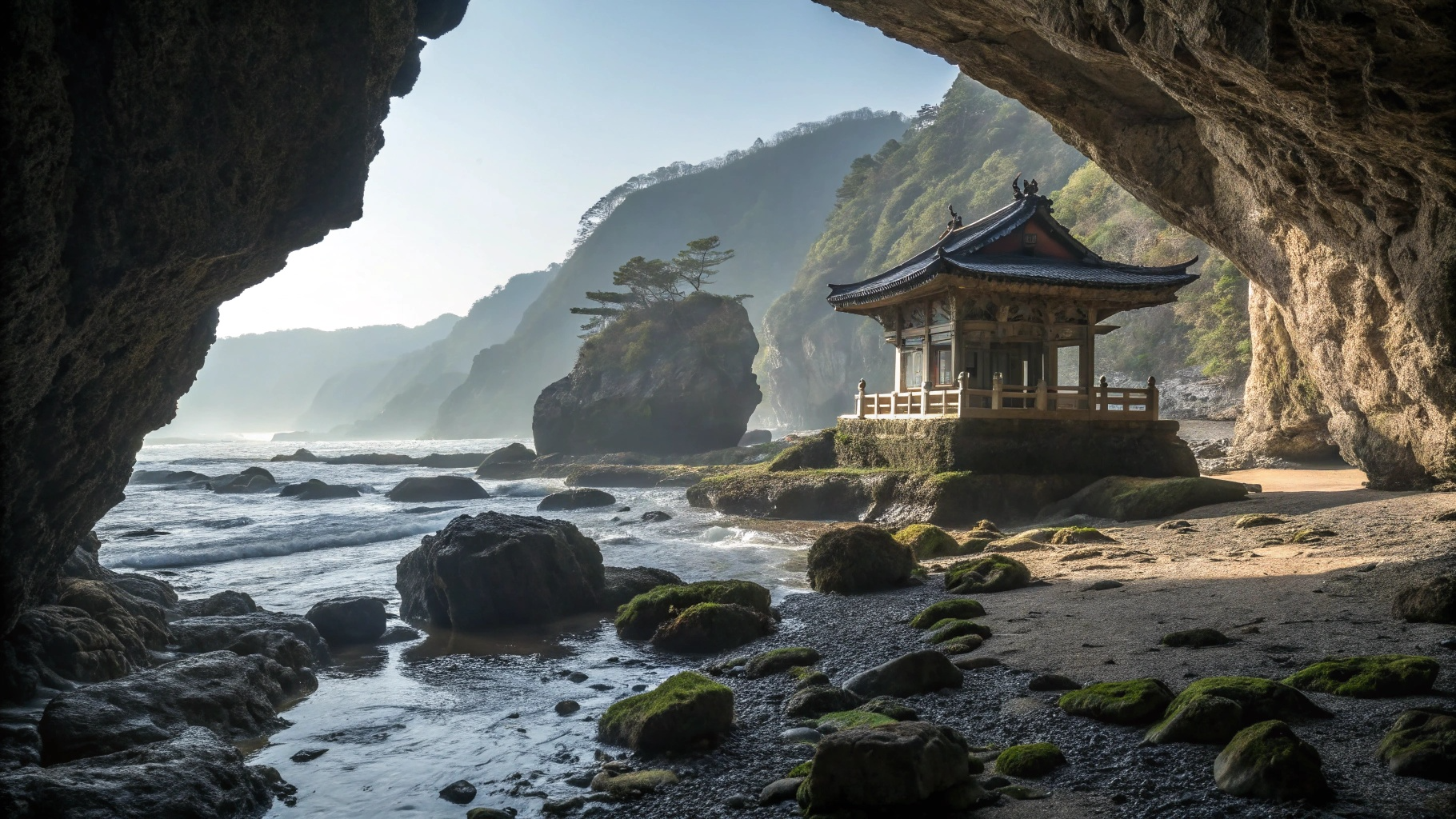

The Silent Dragon's Maw
A hidden shrine in a sea cave, accessible only at the whims of the tide.
This legendary shrine is not built but revealed. Located in a vast sea cave, its inner sanctum can only be reached for a few hours each day during the lowest tide.
History of the Shrine
Ancient folklore tells of a time when the world was a cacophony of noise and conflict. Mokuryu, a child of the great sea dragon Ryujin, grew weary of the chaos of the world above the waves. Unlike his tempestuous siblings, Mokuryu craved silence and stillness. He sought refuge in a deep sea cave on a remote coastline, a place where the roar of the ocean was muffled into a gentle whisper. There, he entered an eternal slumber, his massive form slowly becoming one with the stone walls of the cave, his scales turning to glistening, water-worn rock.
For centuries, local fishermen and monks who discovered the cave honored the dragon's wish for peace. They vowed never to build a permanent structure, believing it would disturb his rest. Instead, they established a tradition of 'tidal pilgrimage'. Worship is governed not by human schedules, but by the rhythm of the ocean itself. This act of waiting for the tide to recede before entering is the first part of the prayer—a lesson in patience and respect for the power of nature.
The Enshrined Kami
Mokuryu is a unique kami who does not represent an active force, but a passive one. He is the embodiment of patience, endurance, and the immense, quiet power of the ocean to shape the world over eons. Unlike his father Ryujin, who controls the storms and tides, Mokuryu represents the deep, still, and silent parts of the sea.
Prayers to Mokuryu are not for worldly success or dramatic intervention. People come here to ask for the strength to endure hardship, the wisdom to know when action is not needed, the ability to find peace within themselves amidst external turmoil, and the patience to let things unfold in their own time. He is a kami for those seeking refuge from the 'noise' of modern life.
What to See
The shrine has no buildings. The 'sando' (approach) is the wet, sandy sea floor at low tide, littered with tide pools. The 'honden' (main hall) is the deepest recess of the cave, where the natural rock formations most resemble the colossal, coiling form of a sleeping dragon. The walls glisten with moisture and bioluminescent algae, which cast a faint, ethereal glow in the darkness. There is no offering box; instead, worshippers leave offerings of smooth, sea-worn stones, adding to the ever-growing collection on a natural stone altar.
The experience is multisensory: the cool, damp air, the salty smell of the sea, the gentle, echoing drip of water from the cave ceiling, and the profound silence that seems to absorb all sound. It is a place for quiet contemplation rather than formal ritual.
Major Festivals
The only 'festival' is the 'Shio-matsuri' (Tide Festival), which occurs during the lowest spring tides of the year, when the cave is accessible for the longest duration. On this day, local priests enter to offer prayers and saltwater-purified sake. Community members follow, entering the cave in silence to meditate and listen for the 'dragon's breath'—the gentle sound of the wind moving through the cave's hidden crevices. It is a quiet, deeply personal, and communal act of reverence.
Support The Silent Dragon's Maw
Your participation helps preserve this sacred site for future generations. Every digital offering contributes to real shrine preservation efforts across Japan.
By making an offering, you become part of a global community honoring Japanese spiritual traditions and supporting the cultural heritage that has been cherished for centuries.